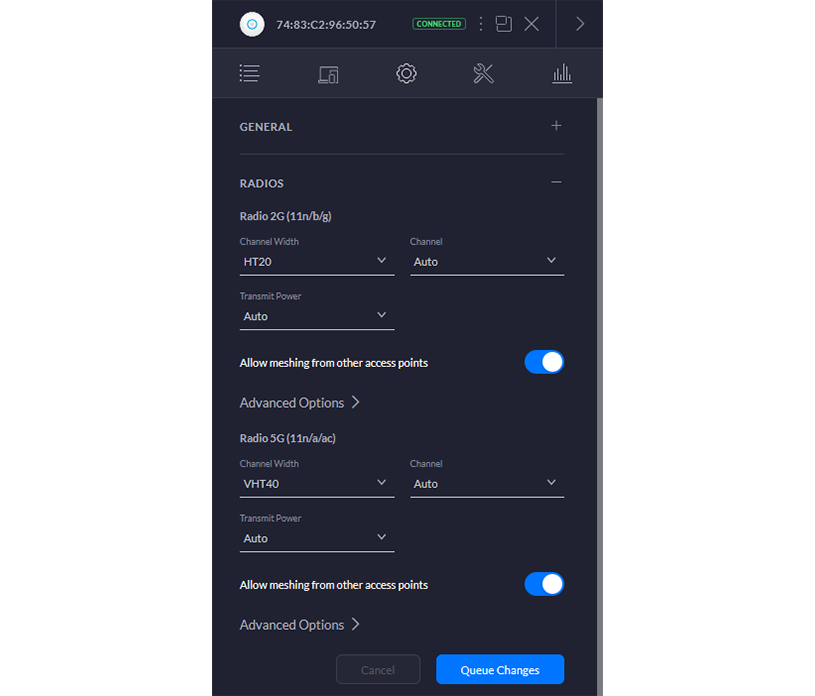


WEP, WPA-PSK, WPA-Enterprise (WPA/WPA2, TKIP/AES) Passive Power over Ethernet (24V), (Pairs 4, 5+ 7, 8 Return)

(1) Dual-Band Antenna, Tri-Polarity, 2.4 GHz: 3 dBi, 5 GHz: 6 dBi The Unifi range also has a lot of features (captive portal included) that the SH3 and other all in one commercial router/APs don't.UniFi Access Point AC Long Range - Specifications UNIFIġ75.7 x 175.7 x 43.2 mm (6.92 x 6.92 x 1.70")Ģ40 g (8.5 oz), 315 g (11.1 oz) with Mounting Kits Try pushing traffic for 50, 100 or 200 users through a Superhub 3 and see what happens. You pretty much already guessed in your OP, but the main advantage of a more prosumer/entry-level enterprise AP is in its ability to handle masses of traffic and many users without crapping its pants and falling over.
UNIFI TRANSMIT POWER FREE
Have you set the channels up properly by choosing a free range of channels, optimised the channel widths per band, and played around with power levels? There's a big difference between 20MHz and 80MHz widths for example.Ģ) As was mentioned earlier, all wifi is capped in transmit power by law. Again, as said earlier your installation location makes a big difference also. It's smaller (aerial size) and has fewer transmit and receive antennae. Most points have already been raised, but just to add a couple more:ġ) If you wanted maximum range and power you'd have been better with a new HD model, not a Lite. Then Unifi just does it all for you.Īnd Mikrotik have a similar system called cAPsMan which also works well, it’s just not as pretty as Unifi. The best domestic desktop combination router/modem/Access Points are every bit as good as Unifi until you want to have two or three of them. You have to step up to an AP-AC-NanoHD before you get similar reception characteristics.Īnd Unifi is definitely over-hyped on here. Any wireless access point needs to be able listen better than it can shout, which is why so many users opt for the Unifi AP-AC-LR. It’s definitely the case that buyers are obsessed with transmission and they forget about reception. The cAP range is the Mikrotik equivalent of Unifi which makes the ‘size’ statement even more odd. The other half just allows for waterproof connectivity for the cables. It’s about 19cm long and 6cm wide but only half the casing has anything in it. And I’m sure you’re aware that the wAP is tiny. The physical size is less important than the antenna design at this end of the market.

I do question your ‘small aerials’ comment. I have no issues with Mikrotik, generally it’s very good (and cheap) kit. Have I been naive? Was I wrong to expect a much stronger signal and better transfer speeds from the AC Lite or is it more a case of it's designed to handle multiple devices much better than something like my SH3. Now I admit that the AC Lite isn't in the best place, sited in the ceiling of an understairs cupboard, but is reasonably central in the house and has the same brick walls to penetrate as my SH3 (under my desk at the moment) The Unifi wins hands down upstairs, but on the extended downstairs layout of our house the far corners still have a poor signal and slow speeds. Running the two networks side by side (on different SSID) the signal strength on both seems pretty similar, with the SH3 slightly ahead in some areas of the house. I don't know what I was expecting but I can't say that I've seen much of an improvement. I've been looking at Unifi products for along time so when they came into stock at OCUK I decided to take the plunge. I'm a networking novice but was looking to improve the wifi signal in my house compared the the Virgin SH3.


 0 kommentar(er)
0 kommentar(er)
